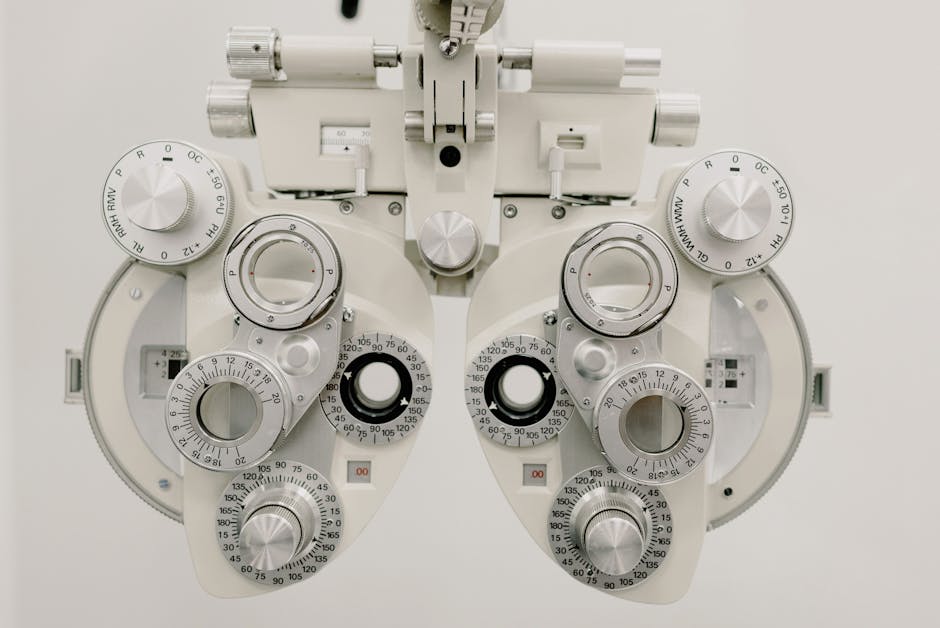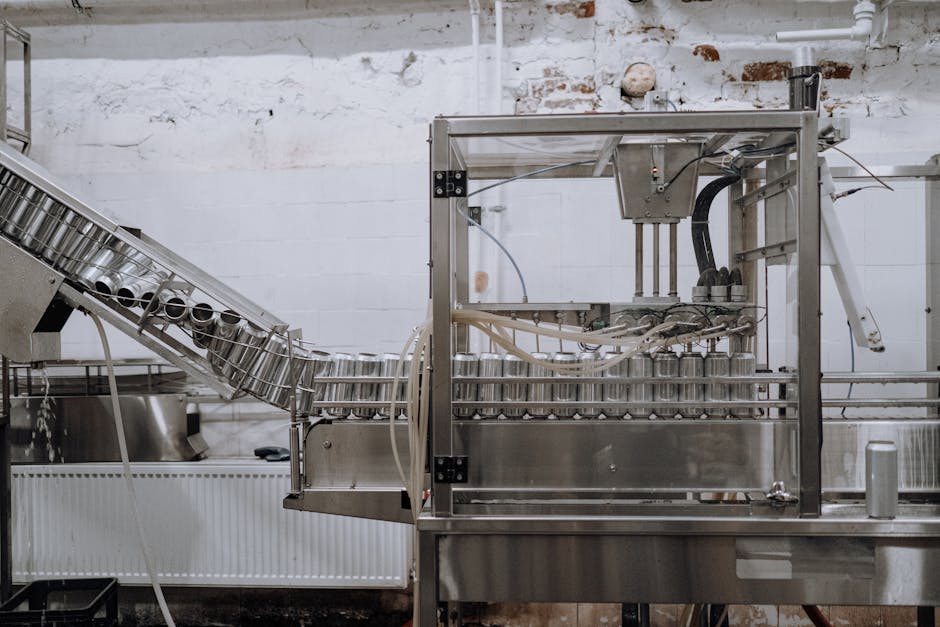Precision Assembly: Strategies for Achieving High Accuracy and Repeatability
To achieve high accuracy and repeatability in precision assembly, you’ll need a multi-faceted approach. Implement advanced quality control measures like statistical process control and digital certifications like ISO 9001. Leverage automation and system design to facilitate efficient production, and optimise workcell design to reduce material handling and production time. Enhance operator training and skill through professional development and mentorship programmes. Finally, integrate metrology, inspection, and data analytics to detect defects and anomalies, and optimise assembly processes. By integrating these strategies, you’ll be well on your way to achieving precision assembly – and uncovering the nuances that guaranty success.
Key Takeaways
• Implement statistical process control methods to monitor and analyse process data, identifying deviations and anomalies for corrective action.• Leverage digital certifications like ISO 9001 to ensure quality control processes aline with industry best practises for precision assembly.• Design an automated assembly system with a modular framework for easy adaptation to changing product designs and production requirements.• Optimise workcell layout to maximise efficiency, minimise material handling, and reduce production time through cellular organisation principles.• Utilise advanced metrology and inspection tools, including real-time monitoring and adjustment, to ensure precision assembly and detect defects and anomalies.
Advanced Quality Control Measures

You implement advanced quality control measures to detect and correct defects early in the assembly process, thereby minimising the risk of downstream failures and associated costs. By doing so, you can guaranty that your products meet the required standards and specifications.
One effective approach is to incorporate statistical process control (SPC) methods, which involve monitoring and analysing process data to identify deviations and anomalies. This enables you to take corrective actions promptly, preventing defects from propagating through the assembly line.
To further enhance quality control, you can leverage digital certifications, such as ISO 9001, which provide a framework for implementing and maintaining a quality management system.
These certifications verify that your quality control processes are alined with industry best practises, reducing the risk of defects and failures.
Implementing Automated Assembly Systems

When implementing automated assembly systems, you’ll need to carefully consider system design factors, such as production volume and part variability, to guaranty efficient and accurate assembly.
You’ll also need to integrate robotic assembly systems that can adapt to changing product designs and production requirements.
System Design Considerations
Designing an automated assembly system requires careful consideration of several key factors to guaranty efficient and precise production.
You need to think about the system’s overall architecture and how it will integrate with existing equipment and processes.
A modular framework is essential, allowing you to easily add or remove components as needed. This modular approach enables you to scale your system up or down to meet changing production demands.
When designing your system, consider an integrated architecture that combines hardware and software components seamlessly.
This integrated approach guarantees that all components work together harmoniously, reducing the risk of errors and downtime.
You should also consider the system’s flexibility and adaptability, as well as its ability to accommodate future upgrades or changes.
Robotic Assembly Integration
By integrating robotic assembly systems into your production line, precision assembly operations can be substantially enhanced, allowing for increased efficiency and reduced labour costs.
As you implement automated assembly systems, you’ll benefit from improved accuracy, reduced variability, and increased productivity. With robotic assembly, you can optimise your production process by minimising human error and maximising output.
To facilitate seamless integration, consider incorporating Robot Vision systems that enable robots to visually inspect and adjust their movements in real-time.
This capability allows for precise assembly and enhances overall system flexibility. Additionally, Autonomous Systems can be integrated to enable robots to operate independently, making adjustments as needed to guaranty consistent product quality.
By leveraging these technologies, you’ll be able to streamline your production process, reduce labour costs, and increase product quality.
As you integrate robotic assembly systems, you’ll be well on your way to achieving high-precision assembly operations that meet the demands of today’s competitive manufacturing landscape.
Optimising Workcell Design and Layout

As you optimise your workcell design and layout, you’ll need to examine several key factors that impact precision assembly.
You’ll want to assess the overall layout to verify efficient workflow, ergonomic station design to reduce operator fatigue, and component accessibility to minimise assembly time.
Workcell Layout Considerations
You must carefully plan your workcell layout to maximise efficiency, minimise material handling, and reduce production time.
A well-designed layout can substantially impact your production process, leading to increased productivity and reduced costs.
When optimising your workcell layout, consider the principles of cellular organisation, where each workstation or cell is designed to perform a specific task or set of tasks.
This approach enables you to streamline your production process, reducing material handling and transportation times.
Spatial relationships between workstations are also vital.
Consider the proximity of each station to the next, ensuring that materials flow smoothly and efficiently through the production process.
A well-planned layout can also help reduce congestion and bottlenecks, allowing your team to work more efficiently.
By carefully planning your workcell layout, you can create a production environment that’s optimised for precision, efficiency, and productivity.
Ergonomic Station Design
Optimising workcell design and layout involves carefully designing each workstation to minimise worker fatigue, reduce injury risk, and boost productivity, ensuring that every employe can efficiently perform their tasks without compromising their physical well-being.
As you design your ergonomic station, you’ll want to identify potential ergonomic risks and mitigate them through clever workspace optimisation.
This might involve adjusting the height and angle of work surfaces, positioning tools and components within easy reach, and ensuring adequate lighting and ventilation.
By doing so, you’ll reduce the likelihood of musculoskeletal disorders, eye strain, and other occupational hazards.
When designing your workstation, consider the flow of tasks and the movement patterns of your operators.
This will help you create a seamless and efficient workflow, reducing the risk of errors and improving overall productivity.
Component Accessibility Analysis
In a well-designed workcell, component accessibility analysis is crucial to guaranty that all necessary parts and tools are within easy reach, minimising operator movement and reducing the risk of errors and injuries.
By analysing the accessibility of components, you can optimise your workcell design and layout to improve efficiency and reduce costs.
To achieve this, consider the following key factors:
Component mapping: Identify the components that require frequent access and prioritise their placement in the workcell.
Supply chain optimisation: Verify that the most frequently used components are stored in close proximity to the workstation, reducing travel time and increasing productivity.
Ergonomic considerations: Position components at a comfortable height and distance to reduce operator fatigue and discomfort.
Enhancing Operator Training and Skill

Developing a thorough training programme focussed on precision assembly techniques enables operators to refine their skills and achieve higher quality outputs.
By investing in your professional development, you can substantially improve your precision assembly capabilities.
A well-structured training programme should include both theoretical and practical components, allowing you to master complex assembly techniques and develop muscle memory.
To take your skills to the next level, consider implementing mentorship programmes, where experienced operators guide and provide feedback to less experienced colleagues.
This approach not only enhances knowledge transfer but also fosters a culture of continuous improvement.
Additionally, cross-training initiatives can help broaden your skill set, allowing you to adapt to changing production requirements and tackle complex assembly tasks with confidence.
Leveraging Metrology and Inspection Tools

By integrating advanced metrology and inspection tools into your precision assembly process, you can guaranty accurate component measurement and detection of even the slightest deviations from specified tolerances. This allows you to identify and correct errors early on, verifying that your assembled products meet the required standards.
To achieve high accuracy and repeatability, you’ll need to leverage a range of metrology and inspection tools.
These may include:
- Optical comparators for precise measurement of component dimensions and geometry
- Laser scanners for rapid, high-resolution inspection of complex surfaces
- Coordinate measuring machines for precise measurement of component features and dimensions
When selecting metrology and inspection tools, factors such as calibration intervals, sensor fusion, and data integration must be taken into account.
Regular calibration maintains that your measurement tools remain accurate and reliable, while sensor fusion enables you to combine data from multiple sources to gain a thorough understanding of your assembly process.
Integrating Real-Time Data Analytics

To guaranty peak performance and minimise errors in precision assembly, you need to access real-time insights on several key aspects.
Integrating real-time data analytics is vital to achieving high accuracy and repeatability in precision assembly. By leveraging real-time data, you can identify potential issues before they become major problems, optimise your process, and make data-driven decisions.
To get the most out of your real-time data analytics, you need to focus on predictive modelling. This involves using statistical models and machine learning algorithms to analyse your data and forecast potential outcomes. By doing so, you can identify trends, detect anomalies, and predict when maintenance is required, reducing downtime and increasing overall efficiency.
Data storytelling is also essential in this context. It involves presenting complex data insights in a clear and concise manner, enabling stakeholders to understand the data and make informed decisions. By combining real-time data analytics with data storytelling, you can create a culture of transparency and collaboration, where data-driven insights drive continuous improvement.
In precision assembly, real-time data analytics can help you monitor and control critical process parameters, such as temperature, pressure, and vibration. By analysing this data in real-time, you can identify deviations from the norm and take corrective action to prevent errors. By integrating real-time data analytics into your precision assembly process, you can guaranty peak performance, minimise errors, and achieve high accuracy and repeatability.
Conclusion
As you integrate these strategies into your precision assembly process, you’ll be able to achieve unparallelled levels of accuracy and repeatability.
But the question remains: are you prepared to continuously monitor and refine your process to stay ahead of the competition?
By combining advanced quality control measures, automated assembly systems, optimised workcell design, enhanced operator training, and real-time data analytics, you’ll be poised to deliver precision assemblies that exceed customer expectations.
Contact us to discuss our services now!
